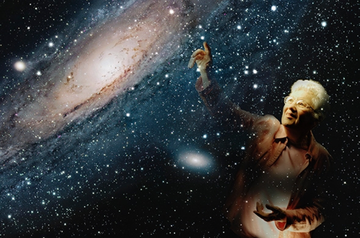Women Physicists Are Here To Rule Nobel Prize 2016
Nobel Prize 2016 is scheduled to happen in October this year. And is making buzz all over the world. Meanwhile, we stumbled upon this post- Link, mentioning how it has been 50 years since any female physicist has won a Nobel Prize. Physics per se, has the least number of women who have been awarded the Nobel Prize. We all know about Madame Curie and Geoppert- Mayyer, they are the first few to be recognised in the field of Physics. But it has been half a century since a female physics laureate has been awarded the same.
Following are the excellent female physicists gunning for the Nobel Prize:
Jocelyn Bell Burnell: Jocelyn is a Northern Irish astrophysicist. As a postgraduate student, she discovered the first radio pulsars while studying and advised by her thesis supervisor. She was President of the Royal Astronomical Society from 2002 to 2004, president of the Institute of Physics from October 2008 until October 2010. She was was elected as President of the Royal Society of Edinburgh in October 2014. She was the subject of the first part of the BBC Four 3-part series Beautiful Minds, in which her career and contributions to astronomy were explored. She helped build the four-acre radio telescope over two years and initially noticed the anomaly, sometimes reviewing as much as 96 feet of paper data per night.
Mildred Dresselhaus: Mildred is an american Physicist. She is known as the "queen of carbon science", is the first female Institute Professor and professor emerita of physics and electrical engineering at the Massachusetts Institute of Technology. She is particularly noted for her work on graphite, graphite intercalation compounds, fullerenes,carbon nanotubes, and low-dimensional thermoelectrics. Her group has made frequent use of electronic band structure, Raman scattering and the photophysics of carbon nanostructures.
Lene Hau: Lene is a Danish physicist. She led a Harvard University team who succeeded in slowing a beam of light to about 17 metres per second, and, in 2001, was able to stop a beam completely. Later work based on these experiments led to the transfer of light to matter, then from matter back into light,a process with important implications for quantum encryption and quantum computing. In 2001 she became the first person to stop light completely. Since then she has produced copious research, and new experimental work, in electromagnetically induced transparency, various areas of quantum physics, photonics and contributed to the development of new quantum devices.
Deborah Jin: Deborah was an American physicist. She is considered a pioneer in polar molecular quantum chemistry. She was involved in some of the earliest studies of dilute gas Bose-Einstein condensates. She used magnetic traps and lasers to cool fermionic atomic gases to less than 100 billionths of a degree above zero, successfully demonstrating quantum degeneracy and the formation of a molecular Bose-Einstein condensate.Jin died of cancer on September 15, 2016.
Vera Rubin: Vera Rubin Is an American astronomer who pioneered work on galaxy rotation rates. She uncovered the discrepancy between the predicted angular motion of galaxies and the observed motion, by studying galactic rotation curves. This phenomenon became known as the galaxy rotation problem. Although initially met with skepticism, Rubin's results have been confirmed over the subsequent decades. Attempts to explain the galaxy rotation problem led to the theory of dark matter.
Margaret Geller: Margaret J. Geller is an American astrophysicist at the Harvard–Smithsonian Center for Astrophysics. Her work has included pioneering maps of the nearby universe, studies of the relationship between galaxies and their environment, and the development and application of methods for measuring the distribution of matter in the universe.
Fabiola Gianotti: Fabiola is an Italian particle physicist, currently CERN ( European Organization for Nuclear Research) Director-General and the first woman to hold this position. She is the author or co-author of more than 500 publications in peer-reviewed scientific journals. She has given more than 30 invited plenary talks at the major international conferences in the field. She was included among the “Top 100 most inspirational women” by The Guardian newspaper (UK, 2011)
Margaret Murnane: Margaret is an Irish physicist, she became interested in physics through her father who was a primary school teacher. Murnane has written or co-written approximately 130 publications in peer reviewed journals, with an average of 42 citations per paper. She built a laser that flashed for ten quadrillionth of a second - the fastest that any human being has ever created. She and her students make lasers whose beams flash like a strobe light - except that each flash is a trillion times faster. These lasers, like camera flashes, shine a light that lets them record the motions of atoms in chemical reactions.
















